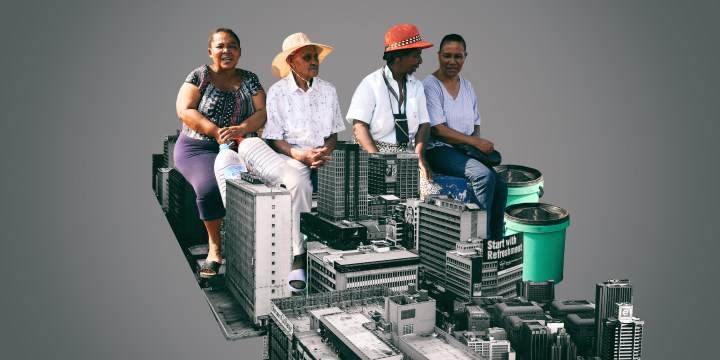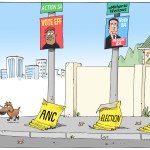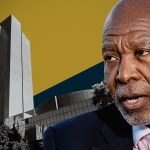AFTER THE BELL
Water, water, nowhere and precious little to drink

‘Water, water, every where, nor any drop to drink,’ Samuel Taylor Coleridge wrote in the Rime of the Ancient Mariner, and you could say the same for Johannesburg and Pretoria.
Not content with mere load shedding, SA’s main cities now have to contend with water shedding, which of course means the same thing — no, nothing is put into a shed; it means shortages and cuts. For some, this is yet another inconvenience; for others, it is critical to life. At least two hospitals have recently been without water. Parts of Johannesburg are also sporadically without water and Stage 2 water restrictions have been imposed indefinitely.
So, ironically, the people most obviously to blame, you might think, would be the DA-run Johannesburg City Council. But trust me, it is much more complicated than that. For one thing, if you have been following the news, the DA was recently ousted as the governing party in the council, only to unexpectedly get their jobs back following legal action. But presumably, this is simply a short stay of execution.
Excuse the following little historical diversion (and I get this from the book Drinking Water by James Salzman).
Since Roman times, city water has been a matter of deep politics. The Romans built huge aqueducts and were the first to bring water into private homes. Free water was provided in public basins called lacūs. When Augustus transformed the republic into an empire, over which he reigned, the number of lacūs in Rome rose from approximately 90 to 600, or one every 50m. They were all elaborately decorated with the words “Aqua Nomine Caesaris” — Water in the Name of Caesar. Augustus softened the blow of reducing popular representation by increasing popular infrastructure. Seen that movie before.
It just shows how water provision has been a political issue for centuries, as it is in Johannesburg today. But like many questions about SA’s ongoing infrastructure disasters, what people partly want to know is who is at fault. Personally, I know exactly who that is, and that would be the person blaming other people.
Rand Water CEO Sipho Mosai gave a press conference recently during which he blamed the water shortage on a range of things, but mostly on his own customers. Because if you are in government you do that.
Just to clarify, Rand Water is the bulk supplier of drinking water for all the Gauteng metros, which it buys from the Department of Water and Sanitation. Joburg’s water comes from the Vaal Dam, which is substantially enhanced by the extraordinary water provision system from the Katse and Mohale dams in Lesotho, commissioned by the pre-democracy government.
So, the first option would be that there is a supply problem from the dams, but this is absolutely not the case. The Vaal Dam is currently at 90% capacity, Katse at 82% and Mohale at 89%. Mosai didn’t directly attribute any water shortage to climate change, but he certainly raised the issue. While climate change is certainly a concern in general, the dam levels demonstrate it cannot be held responsible for issues of provision right now. This bears no resemblance to Cape Town circa 2018 in its countdown to Day Zero.
Visit Daily Maverick’s home page for more news, analysis and investigations
The problem, according to Mosai, is that there is wasteful residential consumption. He points out that Johannesburgers’ rate of use is currently one of the highest in the world, about 300 litres per capita per day on average. (The world average is about 173 litres). He’s no doubt nearing the point of mimicking Eskom, which actually pays for advertising suggesting its customers should use less of the product it sells.
Look at the numbers across the country and you will see that there is obviously something weird going on here, because in the rest of SA the consumption rate is the same as the average global rate. What Mosai didn’t mention is that only about 40% of Johannesburg’s water actually reaches customers; here you have to have some sympathy for the people running Joburg’s water supply, because it’s just an impossible mess.
One of the big problems is Soweto, which was never designed by the apartheid mandarins to be an area permanently occupied by such a large number of people. A city planner once told me the piping system in Soweto is erratic and out of sync with the layout of the streets. Water pipes go under people’s houses, and there are pipe bursts all the time.
Fixing these ruptures is the responsibility of the Johannesburg City Council, so now we can potentially blame the DA. But here is the strange thing: it is not necessarily the current DA administration we should hold to account, but the previous one under Herman Mashaba. Mashaba’s problem was that he ran the council in a coalition with the EFF, which required him to oust members of the Johannesburg Water Board and management to make room for some of his coalition’s stooges.
The result was a disaster, obvs, but even that is not the proximate cause of the current challenge (here we can sympathise a bit with Mosai), because, of course, the problem is Eskom. The high level of Eskom’s load shedding has made it difficult for Rand Water to keep the water storage tanks that are dotted around the city full.
Yet, like Eskom, the root of the problem lies with poor planning and worse execution. The National Planning Commission has just released the National Infrastructure Plan 2050 Phase 2 to thunderous non-applause. The plan is very thorough and detailed. There is one very interesting bit in it, which suggests that a body modelled on the Renewable Independent Power Producer Programme should be created in the national Department of Water and Sanitation to get some private involvement in water provision going.
You have to wonder how much political commitment there is to our big infrastructure plans; we have had them for years and implementation is absurdly slow. But you know, if politicians imagine that South Africans are going to be as forgiving about water provision as they are about electricity, they should think again. Electricity is a convenience. Water is life. DM/BM



















Comments - Please login in order to comment.